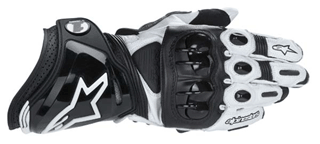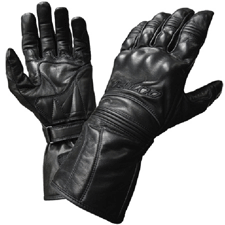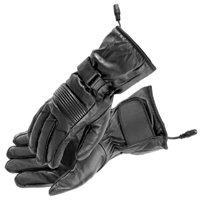|
Motorcycle Gloves: Protection on One Hand, Comfort on the Other
The tricky part is to combine safety, comfort and style while at the same time finding a balance between those three often competing considerations. Types of Motorcycle GlovesSportbike riders have the luxury of having the most protective gloves matching their type of bikes. What looks more natural on a race-replica bike (call them “crotch rockets” if you must) than someone in a full-face helmet, full leathers, racing gloves and boots? A lot of sportbike riders, however, either don’t want to invest in riding gear or don’t see the point. I’m not writing this for that type of rider, unless they’re thinking about changing their minds on the issue. This info is for the smart motorcyclist who is thinking about getting their first set of gloves or hasn’t bought gloves for a while and wants to see what’s new in the market. The downside of the most cutting-edge of any type of product is high prices. But do I have to spend $300 on a pair of motorcycle gloves with titanium finger sliders, Kevlar stretch panels, and carbon fiber knuckle cups to be safe? Not really. You can do a ton of good by just buying a nice set of leather gloves (designed for motorcycling) that is made from a thick enough leather that will be abrasion resistant. Everything else is a bonus and only you can decide if it's worth any extra money to go for more features.
But think of it this way, at 60 mph, every second, you’re traveling 88 feet. If you crashed at that speed and your hands touched down on the road, it would make 60-grit sandpaper seem downright cuddly. If the impact lasted a tenth of a second, that’s still almost 9 feet of road surface grinding away at your unprotected skin. It kind of gives me the willies to think about, but it puts things in perspective a bit. 
Road Racing Gloves: Motorcycle gloves are getting pretty advanced these days and motorcycle road racers need the most advanced protection. These gloves have features like plastic sliders on the backs of the fingers and formed plastic and carbon fiber knuckle plates to spread impact and minimize damage to the small bones of the hand. At the cutting edge of racing glove technology, Alpinestars has even developed a "finger bridge" feature that binds the third and fourth fingers together which prevents the leather from twisting and also keeps the pinkie and ring finger together, which reduces finger injuries.
Gloves geared more toward the sport-touring end of the spectrum, borrow a lot of the features from their racier cousins and wrap it in a less conspicuous package. So, does the cruiser crowd need to sacrifice safety in order to look cool? Not necessarily. Of course, if the look you’re going for is the cliché half-finger biker gloves, you aren’t going to have a lot of protection. Depending on how those are made, they might provide a bit of abrasion protection for your palms if you fall. Your fingers will very possibly get scraped up and there is absolutely no impact protection for your hands, which break pretty easily. So, what’s available for the cruiser rider who wants heavy-duty motorcycle gloves that will protect well in a crash and won’t make him look out of place? Let’s take a look. More of a general gauntlet style touring glove would seem to make sense. Gauntlets refer to gloves with an extension that extends up the arm past the wrist. On motorcycle gloves, the gauntlet flares out slightly to it to fit over the sleeves of your motorcycle jacket (which likely has tapered sleeves with zippers). An adjustable strap on the gauntlet with Velcro to hold it in place is also common. These gloves at least feature sturdy leather construction with padded panels on the back of the hand and knuckles, which gives some measure of impact protection. Many times, there are doubled-up leather panels on the fingers to give abrasion protection. This would be a good option, especially if you got a pair in black.
Winter gloves are a must if you live in the upper Midwest like I do, unless you want to put the bike to bed for the season after about Labor Day. To fight off the chill of autumn rides, you should get a pair of insulated motorcycle gloves to keep your hands toasty. At 60 mph on a 40°F ride, the wind chill is 25°F. If your hands are exposed or you’re wearing summer gloves, your hands will be freezing in no time. And your hands are pretty important for controlling the motorcycle, so keeping them warm is about more than just comfort. Just like regular insulated gloves, insulated motorcycle gloves have thermal insulation like Thinsulate to keep your digits warm and ready to squeeze that brake lever when you see that deer getting ready to cross the road up ahead. The outer material should be leather or a tough nylon material that resists abrasion. Extra knuckle padding is still a good idea, as is a double layer of material on the palm and fingers.
Return from Motorcycle Gloves to Everything Motorcycle's Homepage |


